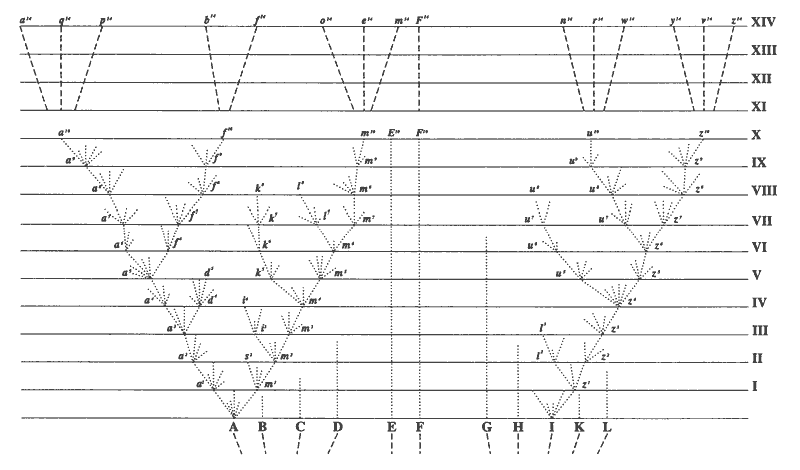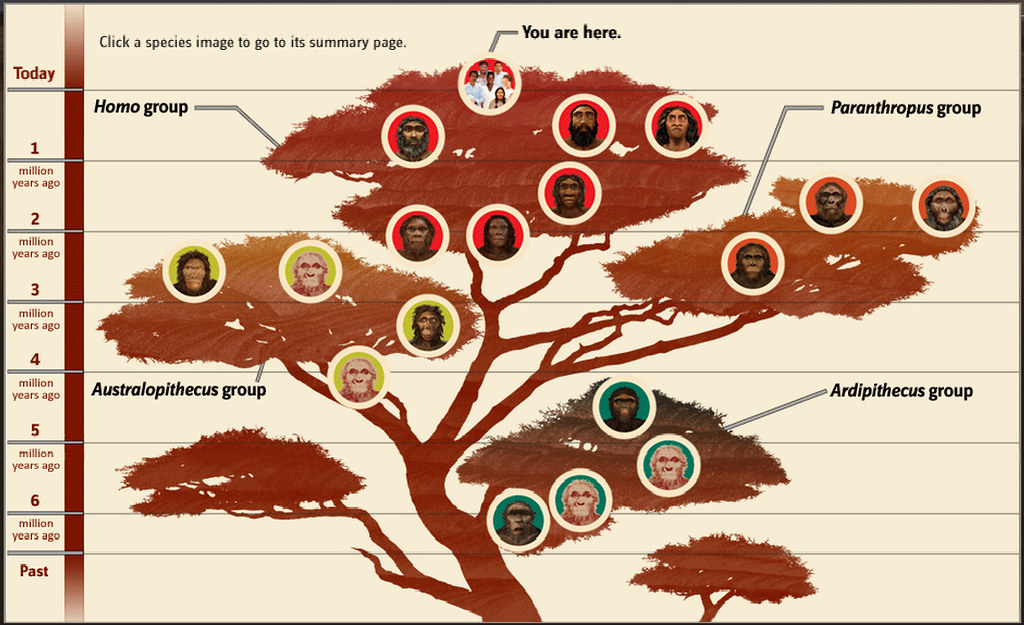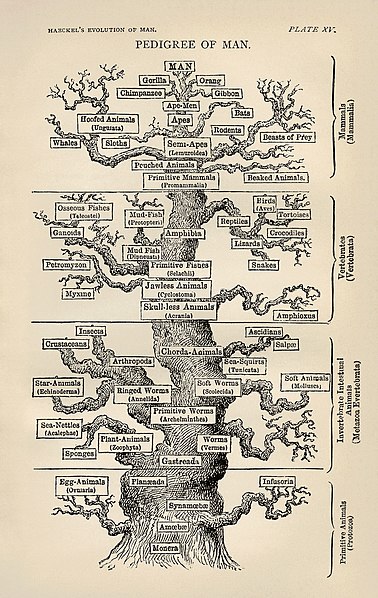As we thought, this became the longest episode we have recorded yet but then again, we had a lot to cover. Chapter IV is the part of Origin of Species where Darwin outlines how he believes natural selection, over long periods of time, can generate new species. It is a rich and complex chapter and our wide-ranging conversation explored a large number of the issues Darwin brings forth in the chapter.
We discussed at great length the variety of ideas that Darwin encapsulates within the only figure in the book. James mentioned how Darwin first sketched the figure in his notebook B - Transmutation of Species with the understated "I think" title followed with "Case must be that one generation then should be as many living as now. To do this & to have many species in same genus (as is) requires extinction. Thus between A & B immense gap of relation. C & B the finest gradation, B & D rather greater distinction."

Ultimately this image became refined for Origin of Species to look like this -

In our discussion we noted that this image represents ideas like: a large number of extinction events, the lack of predictable direction in evolutionary change, no change (E & F), increase in species numbers, differential rates of evolution as indicated by the slope of the lines radiating out at a specified time era (e.g., era IV, z4), and that species can converge in character traits (e.g., how f lineage shifts to look like extinct d lineage). A larger version of the figure can be found here.
Sarah noted how human evolution phylogenetic tree can show the same sort of pruned bushiness that Darwin represented in his figure.
 This figure is from the Smithsonian and is an interactive figure at their site that is worth checking out.
This figure is from the Smithsonian and is an interactive figure at their site that is worth checking out.Interestingly there has been recent researchers who reject the evolutionary tree model for human evolution. Instead of the classic tree structure they note that the mitochondrial DNA (mtDNA) analysis suggests all modern humans can be traced back to African ancestors who dispersed out of Africa only 100,000 years ago. However, those various subspecies of humans interbred and migrated back into Africa thereby creating a more reticulated, "trellis" evolutionary relationship than the classic branching independent lineages as represented in a tree. Follow this link to read a nice summary of the alternative view with a figure to illustrate the trellis view of human evolution.
Sarah mentioned how quickly other scientists adopted Darwin's tree model to represent relatedness and she noted how the embryologist Ernst Haeckel drew up a phenomenal evolutionary tree. To truly appreciate this tree you should see it in a larger format.

We also discussed the rapid evolution of the Hawthorn maggot fly and its shift to feeding on introduced Apples and how that resulted in two populations with little genetic exchange between them. It is a beautiful house fly sized insect with painted wings which they flick to mimic the movement of jumping spiders. Photo Copyright © 2013 Harvey Schmidt
 | |
| http://bugguide.net/node/view/817659 |
Do you see the jumping spider in its wings?
At the end of the podcast we attempted to read the epic opening sentence in Darwin's summary in a way that brings the words to life. Here it is for you to try.
If under changing conditions of life organic beings present individual differences in almost every part of their structure, and this cannot be disputed; if there be, owing to their geometrical rate of increase, a severe struggle for life at some age, season, or year, and this certainly cannot be disputed; then, considering the infinite complexity of the relations of all organic beings to each other and to their conditions of life, causing an infinite diversity in structure, constitution, and habits, to be advantageous to them, it would be a most extraordinary fact if no variations had ever occurred useful to each being's own welfare, in the same manner as so many variations have occurred useful to man.